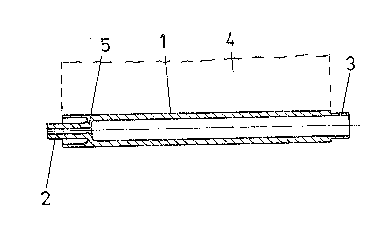Une partie des informations de ce site Web a été fournie par des sources externes. Le gouvernement du Canada n'assume aucune responsabilité concernant la précision, l'actualité ou la fiabilité des informations fournies par les sources externes. Les utilisateurs qui désirent employer cette information devraient consulter directement la source des informations. Le contenu fourni par les sources externes n'est pas assujetti aux exigences sur les langues officielles, la protection des renseignements personnels et l'accessibilité.
L'apparition de différences dans le texte et l'image des Revendications et de l'Abrégé dépend du moment auquel le document est publié. Les textes des Revendications et de l'Abrégé sont affichés :
| (12) Demande de brevet: | (11) CA 2123412 |
|---|---|
| (54) Titre français: | BOBINE DE TRANSPORT |
| (54) Titre anglais: | A ROLL CARRIER |
| Statut: | Réputée abandonnée et au-delà du délai pour le rétablissement - en attente de la réponse à l’avis de communication rejetée |
| (51) Classification internationale des brevets (CIB): |
|
|---|---|
| (72) Inventeurs : |
|
| (73) Titulaires : |
|
| (71) Demandeurs : |
|
| (74) Agent: | SMART & BIGGAR LP |
| (74) Co-agent: | |
| (45) Délivré: | |
| (86) Date de dépôt PCT: | 1992-10-23 |
| (87) Mise à la disponibilité du public: | 1993-05-27 |
| Licence disponible: | S.O. |
| Cédé au domaine public: | S.O. |
| (25) Langue des documents déposés: | Anglais |
| Traité de coopération en matière de brevets (PCT): | Oui |
|---|---|
| (86) Numéro de la demande PCT: | PCT/AT1992/000131 |
| (87) Numéro de publication internationale PCT: | AT1992000131 |
| (85) Entrée nationale: | 1994-05-11 |
| (30) Données de priorité de la demande: | ||||||
|---|---|---|---|---|---|---|
|
(57) Abstract
Described is a reel designed as a core on whose
curved surface (1) a strip of material, in particular pa-
per. can be wound The ends of the reel have coupling
elements (2, 3) by which the reel can be connected to
a winding drive as well as to another reel. Several
reels can be fitted together to produce a core on
which several strips of material (4) can be wound si-
multaneously. On completion of the winding opera-
tion, the rolls of material can be separated from each
other, the coupling elements (2, 3) forming trunnions
which project out along the longitudinal axis of the
reel.
Note : Les revendications sont présentées dans la langue officielle dans laquelle elles ont été soumises.
Note : Les descriptions sont présentées dans la langue officielle dans laquelle elles ont été soumises.

2024-08-01 : Dans le cadre de la transition vers les Brevets de nouvelle génération (BNG), la base de données sur les brevets canadiens (BDBC) contient désormais un Historique d'événement plus détaillé, qui reproduit le Journal des événements de notre nouvelle solution interne.
Veuillez noter que les événements débutant par « Inactive : » se réfèrent à des événements qui ne sont plus utilisés dans notre nouvelle solution interne.
Pour une meilleure compréhension de l'état de la demande ou brevet qui figure sur cette page, la rubrique Mise en garde , et les descriptions de Brevet , Historique d'événement , Taxes périodiques et Historique des paiements devraient être consultées.
| Description | Date |
|---|---|
| Inactive : CIB de MCD | 2006-03-11 |
| Le délai pour l'annulation est expiré | 1997-10-23 |
| Demande non rétablie avant l'échéance | 1997-10-23 |
| Réputée abandonnée - omission de répondre à un avis sur les taxes pour le maintien en état | 1996-10-23 |
| Demande publiée (accessible au public) | 1993-05-27 |
| Date d'abandonnement | Raison | Date de rétablissement |
|---|---|---|
| 1996-10-23 |
Les titulaires actuels et antérieures au dossier sont affichés en ordre alphabétique.
| Titulaires actuels au dossier |
|---|
| HAGLEITNER BETRIEBSHYGIENE GES.M.B.H. CO. KG |
| Titulaires antérieures au dossier |
|---|
| HANS GEORG HAGLEITNER |